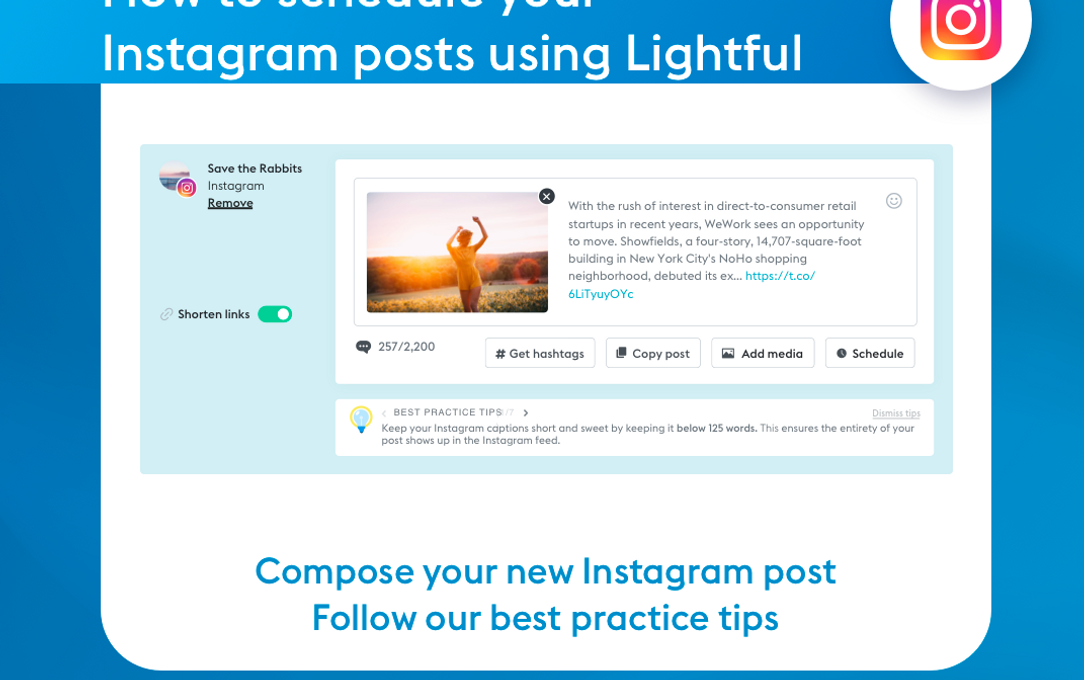Three charities winning at Facebook

Facebook is the world’s largest social network with over 2 billion monthly active users. With so many people on Facebook, it’s a great way to reach more people, share what your cause is about and even raise money. However, you’re competing with posts from friends and family so how can you ensure your posts not only stand out on your supporters’ newsfeeds but get engagement too? Here are three charities we feel have mastered this.
Anthony Nolan
A quick scroll through Anthony Nolan’s Facebook page and it’s evident immediately what it is that the charity does. It’s taken them a while to refine their content strategy for Facebook, which you can read about here, but it’s certainly paid off.
What I love about their posts is that there’s always a storytelling element. This post could so easily have just asked for people to sign up to the stem cell register, using some facts and figures. Instead they have shared Darren’s story about him wanting to get as many people to sign up to the register as he can, by running for the charity. The image is clearly a selfie and is even slightly blurry – adding to the authenticity of the post.
I also like how they vary their posts with both short and long-form content. There is a perception that people won’t read long posts on Facebook but that isn’t true. If you can hook people in with the first sentence or two, they will read below the fold.
Sam Butler, Digital Marketing Manager at Anthony Nolan, offers this advice, “Don’t be afraid to experiment. Recently we’ve been experimenting with adding ‘feelings’ to our posts using the functionality in Facebook. It’s not easy to test the impact this has, but we think it helps to make our posts even more personal, which can only be a good thing.
We’ve also been exploring different ways to tell longer stories on Facebook. By using a simple dividing line (we just use a row of dashes), we’re able to write a short intro or ‘cliffhanger’ with a call-to-action link, but still give more context ‘below the fold’.”
Refugee Action
Let’s face it, a charity whose mission it is to help refugees and asylum seekers is always going to be subject to a fair amount of abuse – particularly in the current climate of the rise of the alt-right. So why is it that there aren’t any negative comments on Refugee Action’s Facebook page?
They use storytelling to put us in the shoes of refugees and asylum seekers and, by doing so, bring home the difficulties they face. It helps us to feel empathy and to take action – even if it’s just leaving a welcome message.
They work very hard to change perceptions and highlight positive stories in the media – even if it’s not about their charity or their services. This aligns with their mission of helping refugees and asylum seekers who are trying to rebuild their lives in the UK, to live with dignity. They are helping to give them a voice.
Over the years, newsjacking has become more and more popular as a way to reach a new audience. For those who are unfamiliar with the term, it’s when a person, brand or organisation ‘hijacks’ the news for their own agenda. Charities are using this tactic more and more – often with a questionable reference. Refugee Action rarely jumps on the newsjacking bandwagon but when they do it’s well thought out and completely relevant to their audience. It’s the kind of content that people want to share, which is what every charity wants. It helps reach more people who share similar interests to their friends, meaning they’re more likely to want to engage with your cause too.
Refugee Action’s Digital Communications Officer, Hannah Botting, shares this advice, ”Take the time to get to know your audience – what they like, what will move them or motivate them, and where possible, what you can share with them that they can’t find anywhere else. We know that our audience is smart, up to date and well informed. That sometimes means we share stories from our clients or the people we support, but it can also mean sharing the expertise of our staff, and our opinions on current events, policy changes or political movements.
It’s a challenge because Facebook changes so frequently, and it takes time to build up that understanding – so you just have to keep trying and paying attention to what works. Don’t be disappointed if what you think is a really interesting story doesn’t get the response you expected – just try to figure out if there’s something missing that your audience needs, or a different angle you can give them that nobody else can.”
RNIB
The RNIB may be a charity that’s 149 years old (they were founded in 1848) but you wouldn’t think that looking at their Facebook page. Their tone of voice is warm, friendly and they’re certainly not afraid to use an exclamation mark or two to indicate excitement or delight.
They don’t just share news and broadcast, but rather involve their audience by asking for their thoughts and opinions. It’s one reason why they get so much engagement. And they take the time to reply to people’s comments, meaning that person is more likely to leave a comment on another post. And as we all know, the more a person engages with your page, Facebook will then show your posts on their newsfeed.
They caption all their images so that those using screen readers are able to imagine or picture what the image is about and their descriptors are very, well … descriptive! It may seem like such an obvious thing to do but a quick look on Facebook and not all charities who have visually impaired or blind supporters do this in their posts.
Nathan Murray, Social Media Manager at RNIB offers these tips, “Understand what your audience wants to hear from your organisation and use this to shape your content. This sounds like straight-forward advice but can easily be forgotten in organisations with lots of internal priorities and stakeholders. At RNIB, we try to ask ourselves ‘Would I want to see this in my timeline?’ and if the answer is ‘No’ then we don’t post it. This year, we’ve also invested lots of time growing our online communities using Facebook Groups – we’ve had great success and I’d recommend other charities to think about how they could use this tool.”
So, how can you improve your posts?
- Remember that, on Facebook, you’re competing with people’s friends and family so you need to make sure your posts stand out on their newsfeed.
- Think about what your audience wants to know, not what you want them to know.
- Even if you ‘are not your audience’, you still know what kind of posts you would want to read and engage with so create the posts that you would want to see.
- Visuals and video always stand out so use them if you can in every post.
- Remember to reply to people’s comments so that they are more likely to comment again.
Latest articles

In a world of growing uncertainty, small and local non-profit organisations often find themselves with competing priorities and struggle to plan how to allocate their available resources. Despite the increasing demand for their vital work, they are not always able to allocate the funds they receive to strategic planning and future growth.

As the world becomes more digitally-focused, it’s essential for nonprofits to have a digital presence. With more and more options for online engagement, we know that this can be challenging for nonprofits to tackle. But, we also know that it is a huge opportunity to increase audience engagement, awareness and fundraising. To help nonprofits navigate this, we’re going to explore the “whys” and “hows” of creating a nonprofit digital strategy. We’re even providing a free digital strategy canvas to help nonprofits improve their online presence in just a few steps.
Related posts

Facebook recently announced that they are removing Facebook Analytics. Facebook Analytics was a tool that allowed individuals to see how their Facebook followers were interacting with their pages and content. As of June 2021, it is no longer available, but what does this mean for your organisation and your social media data?

Instagram is a visual channel that helps you build an engaged community of people who are following your cause.
See who we help
Contact us
Want to learn more?
Email Jonathan and start a conversation





